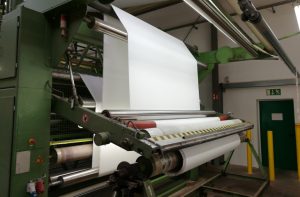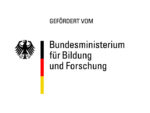R4-Lan-Tex
r4-Lan-Tex – Recovery of lanthanum from residues of refinery catalyst production for the petrochemical industry using polyelectrolyte-treated textiles
The objective of the R&D project “Lan-Tex”, funded within the BMBF measure “r4”, was the development and production of a textile for the selective recovery of lanthanum from residues of the production of cracking catalysts. Within the project period, the basic suitability of polyelectrolyte-functionalized textiles for the recovery of lanthanum from the corresponding process waters of FCC catalyst production was demonstrated. However, a selective and thus direct separation of lanthanum from the La/Al mixture proved not to be feasible. Alternatively, the project partners developed a strategy in which aluminum is precipitated via a gentle pH increase and lanthanum is removed from the remaining solution via the textiles developed here, where the textile can be reused over many cycles consisting of lanthanum loading, desorption and regeneration. It was also possible to equip the polyelectrolyte favored for lanthanum adsorption on the polyester needle felt produced by Röders according to a formulation optimized at DTNW at the project partner Roessing on an industrial scale to > 2 m width at a fabric speed of up to 6 m/min (Figure 1).

Figure 1: Finishing with polyacrylic acid on an industrial scale.
Under laboratory conditions, the adsorber textile presented in this way exhibits a lanthanum capacity of up to 100 g La/kg textile. In addition, it was shown that the textile could be reused at least 18 times without significant loss of lanthanum capacity. During this phase of the R&D project, Decker advanced the design of the pilot plant and conducted hydraulic studies on different packing models of the textile material. According to these, a wound textile module provides optimal flow utilizing the entire textile as an adsorption surface for passing lanthanum. However, in the further course, this winding technique proved to be impractical, since a tight seal in the reactor, which is essential for a complete flow through of the textile, was not achieved. The alternative use of individual textile chips led to good adsorption results with lanthanum capacities of up to 30 g La/kg textile. In summary, from a scientific and technical point of view, all the main project objectives were achieved. However, the investigations also show that the proposed concept cannot yet be applied in practice from an economic point of view at the present time. Nevertheless, the R&D project has significantly increased the level of knowledge regarding innovative strategies for the recovery of strategic metals in general and the use of textile materials for the adsorption of valuable metals in particular. The project can thus contribute to reducing strategic shortages of the metal lanthanum in the future and also improve the sustainability of the use of rare earths. The intended recovery and recycling strategy will ultimately reduce the environmental impact at the production sites (especially in China). In the medium term, there may also be many other potential applications for such innovative adsorber textiles in a wide variety of areas of the metal-processing industry, e.g. in the recovery of precious metals or in the decontamination of groundwater and surface water contaminated with heavy metals.Project Information:
Title (German): r4-Lan-Tex – Rückgewinnung von Lanthan aus Rückständen der Raffineriekatalysatorherstellung für die Petrochemie mit Hilfe von Polyelektrolyt-ausgerüsteten Textilien
Acronym: r4-Lan-Tex
Grant: 033R138A
Project Duration: 01.07.2015 – 30.06.2018
Project Partners: Deutsches Textilforschungszentrum Nord-West gGmbH, Krefeld
Gebrüder Röders AG, Soltau
Textilausrüstung Roessing GmbH, Rhede
Decker Verfahrenstechnik GmbH, Berg
Contact DTNW: Dr. Klaus Opwis, Tel.: +49-2151-843-2014, e-Mail: opwis@dtnw.de
Weitere Informationen zum Download:






